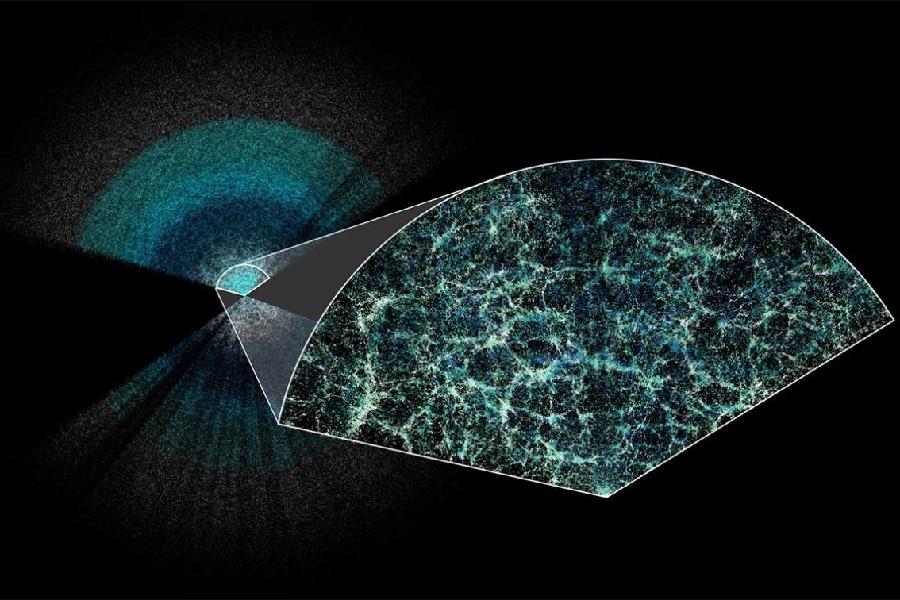Scientists have created the largest 3D map of the universe, a data reservoir featuring six million galaxies expected to provide new insights into cosmic evolution and the nature of the mysterious “dark energy” accelerating the expanding universe.
An international research consortium involving over 70 institutions, including the Tata Institute of Fundamental Research (TIFR), Mumbai, on Thursday released data from its first year of observations made through the Dark Energy Spectroscopic Instrument (DESI) located in a US observatory.
The instrument collects light signals from galaxies in distant parts of the universe that astronomers have used to create the 3D map showing the distribution of galaxies and large-scale structures that make up the cosmic tapestry. Astronomers have also used DESI data to track the expansion of the universe with unprecedented precision.
“The treasure hunt with this map has only just begun,” Shadab Alam, a theoretical physicist at the TIFR who led India’s contribution to the DESI project, told The Telegraph. A TIFR team led by Alam used powerful supercomputers to simulate the evolution and movement of galaxies over billions of years.
The simulations helped validate DESI’s cosmic cartography efforts.
The largest 3D map of the cosmos until now had featured around three million galaxies and emerged from a project called the Sloan Digital Sky Survey in the US conducted between 2000 and 2015.
A key objective of the new larger map is to make the most precise measurements yet on galaxies to probe the intriguing entity called dark energy — something that is accelerating the expansion of the universe — first discovered in the late 1990s but remains largely unexplained.
“What governs this acceleration remains a mystery,” Alam said. “By precisely recording galactic light fingerprints across billions of light years, DESI has mapped the expansion history of the universe. Its data will tell us how the expansion has occurred over those years.”
Astronomers believe fathoming the nature of dark energy and another mysterious and invisible component of the cosmos called dark matter is critical to understanding the evolution and even the long-term fate of the universe.
“So far, we’re seeing basic agreement with our best model of the universe, but we’re also seeing some potentially interesting differences that could indicate that dark energy is evolving with time,” Michael Levi, DESI director at the Lawrence Berkeley National Laboratory in the US. “Those may or may not go away with more data — so we’re excited to start analysing our three-year dataset,” he said in a media release from the Berkeley lab.
In March this year, DESI had accumulated over three years of observational data.











